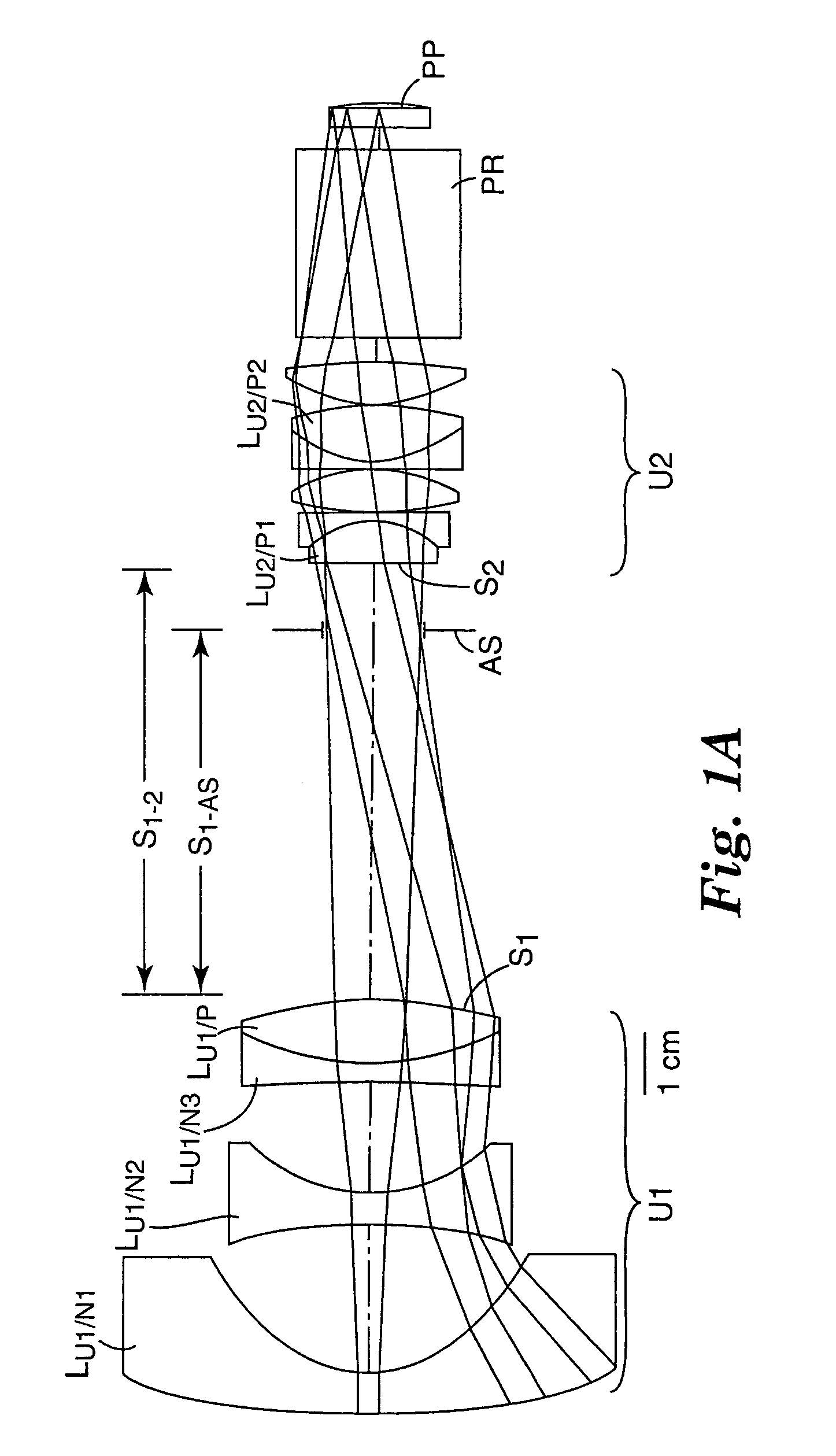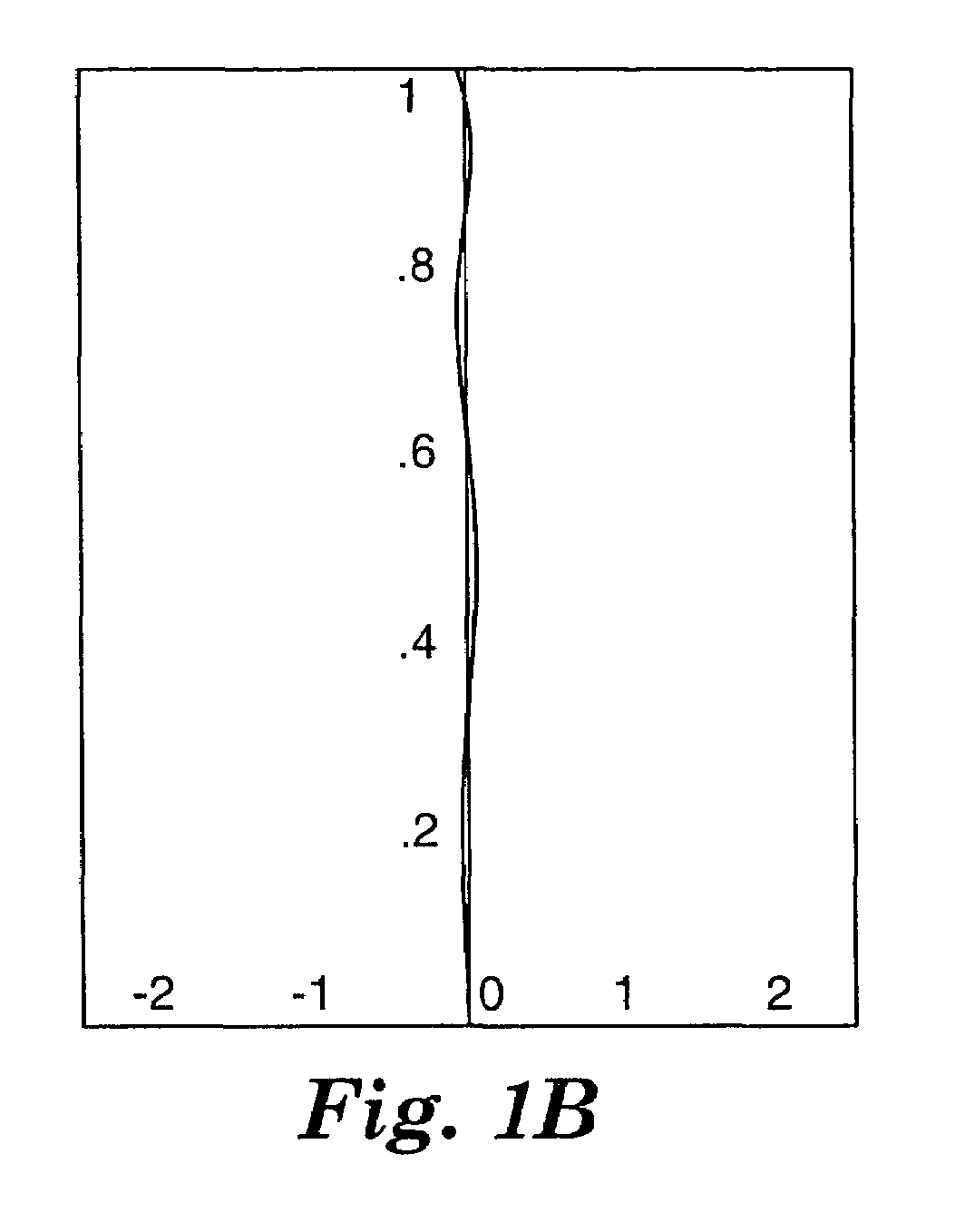Foldable projection lenses
a projection lens and lens body technology, applied in the field of folding projection lenses, can solve the problems of lateral color, i.e., the variation of magnification with color, and the inability to perform accommodation, so as to avoid the problem of apparent distortion, the effect of high distortion correction level and sensitive to curvatur
- Summary
- Abstract
- Description
- Claims
- Application Information
AI Technical Summary
Benefits of technology
Problems solved by technology
Method used
Image
Examples
examples
[0128]FIGS. 1–5 and Tables 1–5 illustrate representative projection lenses constructed in accordance with the invention.
[0129]OHARA designations are used for the various glasses employed in the lens systems. Equivalent glasses made by other manufacturers (e.g., HOYA or SCHOTT) can be used in the practice of the invention. Industry acceptable materials are used for the plastic elements.
[0130]The aspheric coefficients set forth in the tables are for use in the following equation:
[0131]z=cy21+[1-(1+k)c2y2]1 / 2+Dy4+Ey6+Fy8+Gy10+Hy12+Iy14
where z is the surface sag at a distance y from the optical axis of the system, c is the curvature of the lens at the optical axis, and k is a conic constant, which is zero except where indicated in the prescriptions of Tables 1–5.
[0132]The designation “a” associated with various surfaces in the tables represents an aspherical surface, i.e., a surface for which at least one of D, E, F, G, H, or I in the above equation is not zero; and the designation...
PUM
 Login to View More
Login to View More Abstract
Description
Claims
Application Information
 Login to View More
Login to View More - R&D
- Intellectual Property
- Life Sciences
- Materials
- Tech Scout
- Unparalleled Data Quality
- Higher Quality Content
- 60% Fewer Hallucinations
Browse by: Latest US Patents, China's latest patents, Technical Efficacy Thesaurus, Application Domain, Technology Topic, Popular Technical Reports.
© 2025 PatSnap. All rights reserved.Legal|Privacy policy|Modern Slavery Act Transparency Statement|Sitemap|About US| Contact US: help@patsnap.com



